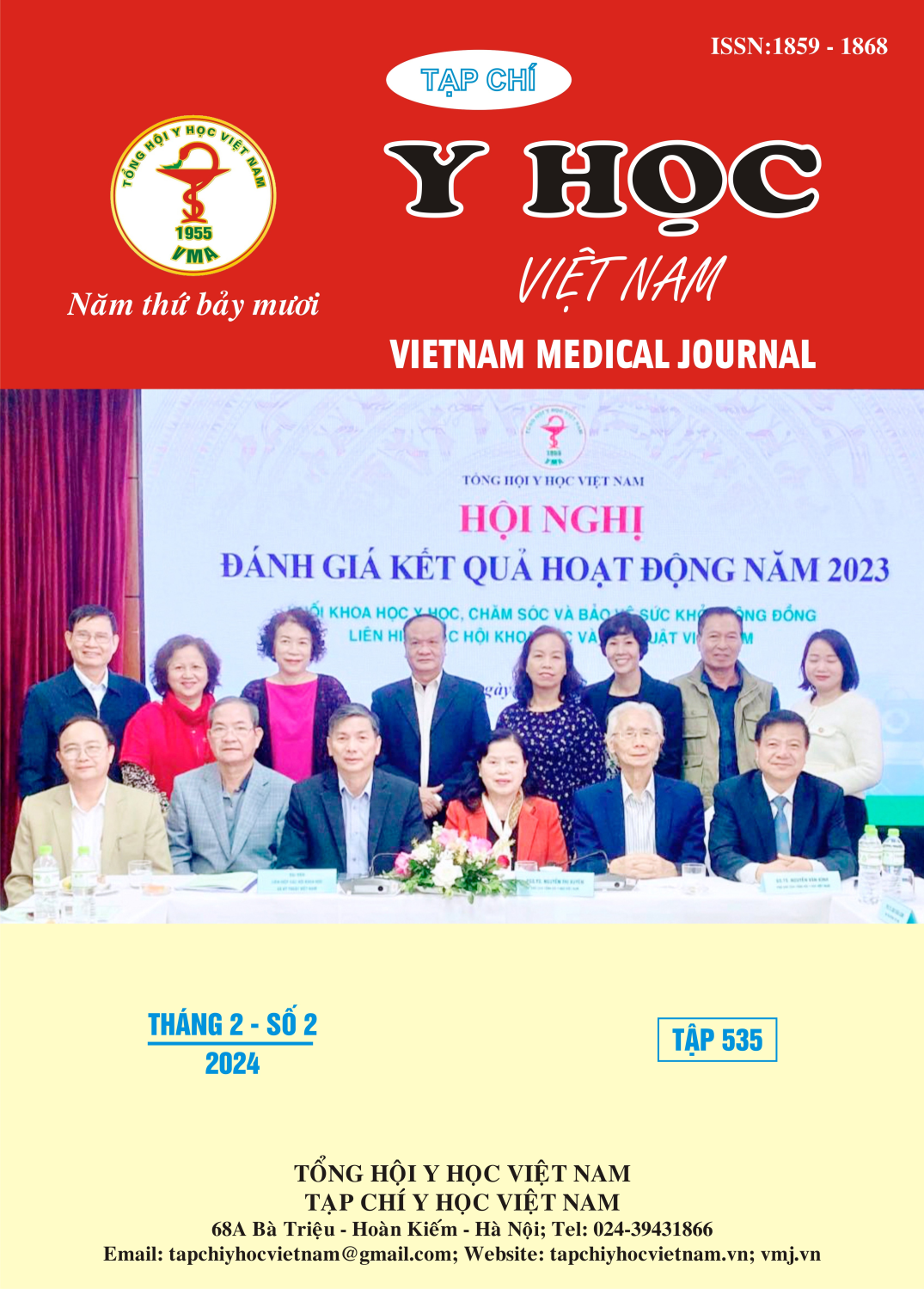RESULTS OF TREATMENT OF INFECTIOUS SHOCK ENTERING FROM THE URINARY SYSTEM AT HANOI MEDICAL UNIVERSITY HOSPITAL
Main Article Content
Abstract
The purpose of this study is to evaluate the outcomes of treatment for uroseptic shock at Ha Noi Medical University Hospital. The study included 26 patients with an average age of 63.7 ± 13.7 years, the majority being female at 65.4%. SOFA scores, APACHEII scores and blood lactat at admission were 7.4 ± 2.5, 16.4 ± 4.2 and 4.0 ± 3.1mmol/l, respectively. There were 14 patients (53.8%) with urinary tract obstruction, of which ureteral stones were the most common cause (38.5%). The positive urine and blood culture rates were 61.5% and 69.2%. E. coli was the most common bacteria with urine and blood culture rates of 38.5% and 50%. 50% of patients were initially treated with 1 antibiotic and 50% of patients with 2 antibiotics. The response rate to initially antibiotics in these 2 groups were 92.3% and 84.6%. Of the 14 patients with obstructive urinary tract, 9 patients (34.6%) received percutaneous renal pelvis dranage, 4 patients (15.4%) were placed JJ stent and 1 patient (3.8%) required nephrectomy. The average hospital stay was 19.0 ± 15.7 days with a mortality rate of 7.7%. Thus, uroseptic shock is a severe condition with a high mortality.
Article Details
Keywords
sepsis, urosepsis, septic shock, uroseptic shock.
References
2. Cardwell SM, Crandon JL, Nicolau DP, et al. Epidemiology and economics of adult patients hospitalized with urinary tract infections. Hosp Pract. 2016; 44(1):33–40.
3. Tandogdu Z, Wagenlehner FM. Global epidemiology of urinary tract infections. Curr Opin Infect Dis. 2016; 29(1):73–79.
4. Bonkat G, Pickard R, Bartoletti R, et al. Guidelines on urological infections. EAU Guideline. 2023.
5. Florian M.E. Wagenlehner, Zafer Tandogdub and Truls E. Bjerklund Johansen. An update on classification and management of urosepsis. Curr Opin Urol. 2017; 27(2):133-137.
6. Wang Z, Schorr C, Hunter K, et al. Contrasting treatments and outcomes of septic shock presentation on hospital floors versus emergency department. Chin Med J. 2010; 123:3550–3.
7. Michael Bauer, Herwig Gerlach, Tobias Vogelmann, et al. Mortality in sepsis and septic shock in Europe, North America and Australia between 2009 and 2019— results from a systematic review and meta-analysis. Crit Care. 2020; 24: 239.
8. Vũ Đình Hùng, Kiều Thị Hoa, Hoàng Bùi Hải. Cơ cấu bệnh tật tại khoa Cấp Cứu – bệnh viện Đại Học Y Hà Nội năm 2019. Tạp chí Nghiên Cứu Y Học. 2021; 147(11):317-323.
9. Wagenlehner, F.M.E.; Weidner, W.; Naber, K.G.; et al. Pharmacokinetic Characteristics of Antimicrobials and Optimal Treatment of Urosepsis. Clin. Pharmacokinet. 2007;46:291–305.
10. Chin B. S., Kim M. S., Han S. H., et al. Risk factors of allcause in-hospital mortality among Korean elderly bacteremic urinary tract infection (UTI) patients. Archives of Gerontology and Geriatrics. 2010; 52:e50-e55.


